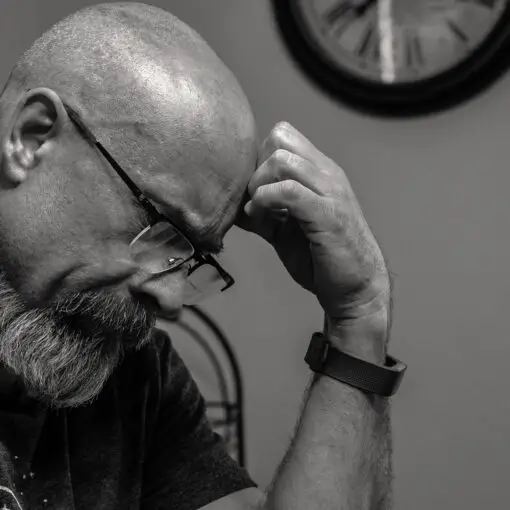Every business leader has learned from past economic crisis. The previous global financial crisis has taught us a powerful lesson about poor business decisions.
These decisions were grounded on incomplete, and/or partially false, and of course erroneous information. The companies that folded during that crisis were examples of those that had leaders who failed to strategically identify the full implications of the decisions that they were making at the time.
What is Critical Thinking?
So, what was missing back then in the heat of the recent global financial crisis? We submit that it was none other than critical thinking. So, what is it?
According to Claremont McKenna College professor Diane Halpern, critical thinking is the use of strategies and cognitive skills in order to increase the probability of attaining a desirable outcome.
It is an exercise in goal directed, reasoned, and purposeful thinking that can be used in formulating inferences when making decisions. Critical thinking skills will enable you as a leader to calculate possible likelihoods thus in a way allowing you to anticipate future pitfalls as well as likely opportunities.
Recognize the Signs
What does an organization that lack critical thinking look like? There are five telltale signs that your organization may be lacking critical thinking development.
The following are the signs that you should be looking out for:
- Overworked employees who are driven to the point where they are just too busy getting tasks done as fast as they can.
- Everyone from the staff to the middle and top managers are going at it way too fast (sometimes being so adamant) that they are unaware or unwilling to find better ways of doing things and critical thinking in general.
- Your company culture is one that relies more on business processes rather (you’re often stuck in the same process that everyone believes is already time tested) than processes that promote critical thinking.
- You have managers that are overly focused on what needs to be done and are unable to look beyond the proverbial horizon to see how things could be done better.
- Your company puts a bigger premium on work output but doesn’t recognize and develop contributor talent.
Instilling Change
Do you see any of the above mentioned signs in your organization? If you do then you can readily identify some of the issues that you need to tackle in order to bring about a transformation.
Expect people to resist change when you aim to develop critical thinking skills. A lot of times, it takes a paradigm shift to inculcate change. The good news is that there is a tool that you can use to assess your team’s current cognitive abilities—it is called the Watson Glaser Critical Thinking Appraisal.
It can help you identify significant factors that are either needed or are already present in your team that is conducive to critical decision making. This tool is actually comprised of 5 sub-tests that measure your team’s attitudes, skills, and knowledge.
These are the sub-tests:
- Recognition of assumptions
- Inference
- Evaluation of arguments
- Interpretation
- Deduction
Critical Thinking Skills Necessary in Leadership
After identifying where your team is at in terms of critical thinking in leadership, you can then proceed to acquire training in different essential critical thinking skills.
What skills are those? Here is a short list:
- Leadership Style/Coaching and Performance Management – leaders should learn how to identify and motivate employees using the situational leadership model.
- Problem Analysis – another critical thinking skill is the ability to analyze problem situations. Leaders need interpretation and analysis skills to understand the complexities of a problem in order to address them.
- Quantitative Contexts – this refers to one’s ability to reason well with others citing empirical data. The data is used to arrive at an optimal problem solution.
- Inductive and Inferential Reasoning – this skill allows leaders to solve problems that have uncertain, ambiguous, and risky contexts. Leaders with this skill can identify solutions that have the most likelihood of success.
- Deductive Reasoning – this skill allows leaders to anticipate possible outcomes and therefore be able to prepare for them. This also allows leaders to see the implications as well as the applications of regulations, policies, and directives that are implemented either currently or in the future.
- Evaluating Alternatives – this skill involves the ability to analyze problematic situations and identify probably options in order to establish priorities.
Practical Approach to Enrich Critical Thinking Skills
You now have identified both the problem areas as well as the critical thinking skills that your team needs. The next step is to formulate a strategy to ingrain the aforementioned skills into your organization.
Here are a few ideas how you can do that:
- Each leader should take include in their daily schedule a certain amount of time that is spent to organize and plan.
- Learn to fall in love with the problem. It takes a paradigm shift I know, but problems can either be something you dread or you can see it as an opportunity to grow.
- Stay away from the refried beans. The goal is to think fresh. The old solutions may not exactly work for new problems. Take your team and work together to find new solutions and fresh alternatives.
- Express the type of culture you desire for your organization. Don’t just hope that your company culture will change by itself—it seldom does. As leaders, you should be vocal about it and campaign for it.
- Stimulate curiosity. Make everyone curious about critical thinking. It could be through exercises that allow everyone to provide input, share case studies, and provide insight. You may be surprised to find little nuggets of genius when you involve everyone in a critical thinking master class.
- Keep everything light not tight. Don’t allow dogmatism to take over your organization. Make the critical thinking process a dynamic part of your company’s culture. That means everyone should be part of it.
- Document what works. The goal is not to get the policy, process, procedure etc. set into stone but to help you gauge other possible alternatives that you may not have tried yet.
Socialized and developed critical thinking skills are essential today for problem solving. It acts as a catalyst that connects people throughout the organization and leaders have the unique opportunity to drive these principles that will help you thrive in a forever changing environment.





